Not enough to be technically astute. An artist has to go deeper and ask a substantive question, feels contemporary artist Agnes Husz.
It really is time for everyone to realise that art is just as much an asset as anything else on the market. If you want to own it in some form, you have to pay for it. By purchasing an art work, not just one object is acquired by the collector, but the essence of the artist’s life and decades of experience, condensed into a single work.
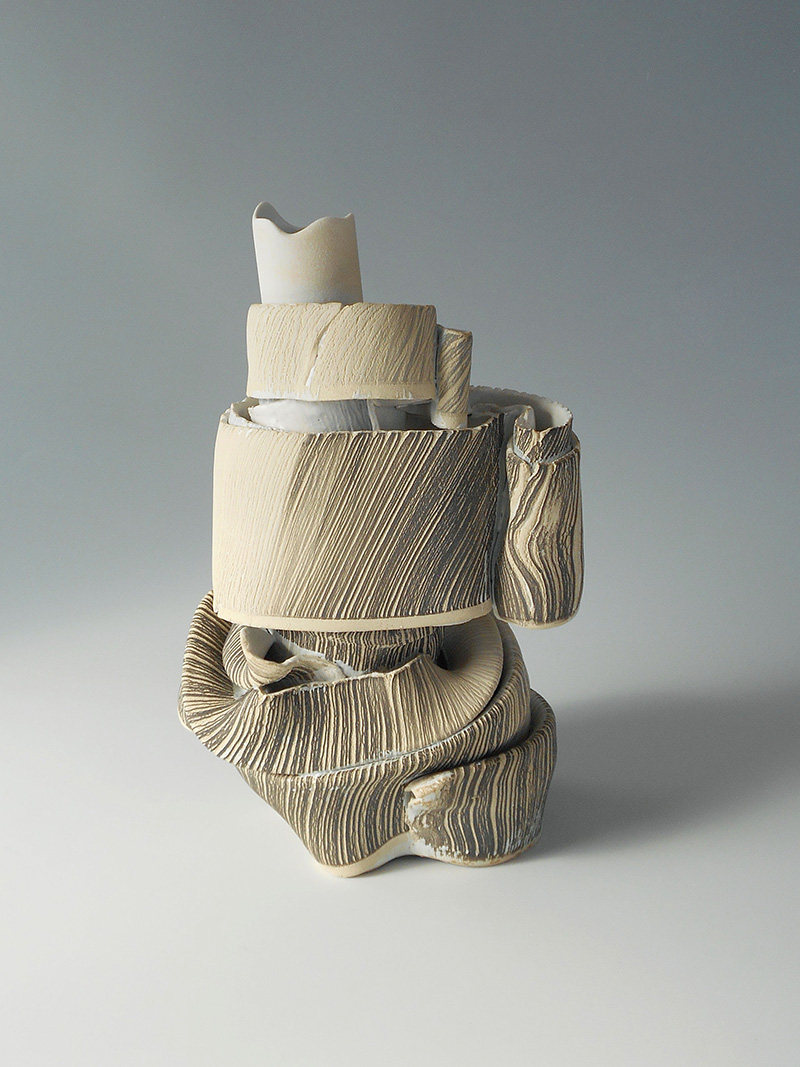
Contemporary artist Agnes Husz.
How did your tryst with art begin?
I have always wanted to become a sculptor. No one in our family dealt with art but everyone loved it and took an interest in it. The family collection contained works by contemporary Hungarian painters and beautiful old pottery works, especially antiques from my hometown, Mohács and its surroundings.
In the eighties, high schools taught art in only three places, and university education was only available in the city of Pécs, which has a rich historical and cultural heritage. I started my art studies at the Fine Arts College of Pécs. I was lucky because an excellent sculptor and artist taught us how to draw and sculpt. I wanted to go deeper into sculpture at the university with the excellent basics I acquired here. At the same time, I found that contemporary ceramic artists reflected the spirit of the age, with forward-looking, pioneering works.
The most important thing in my sculptural studies is that they have an impact on the environment. Instead of the academy, I chose the freer arts and crafts university in ceramics and porcelain. Seven to eight students were enrolled every year. Imagine how difficult it was! It took me four years to get into college. Of course, those years didn’t go to waste. During this time, working in different factories, I learned the technical part of the profession.
I completed my diploma work at the International Ceramic Studio in Kecskemét. Here one of our masters, the sculptor Sándor Kecskeméti, offered me the opportunity to apply for a ceramic course at the EKWC, European Ceramics Workcentre in the Netherlands, where I finally won a three-month creative scholarship.
In the summer of 1993 I reached a turning point in my career. It is here that I developed my first “spiral objects” – whirls, bandaged shapes, implying the motion of binding and loosening, drawing in and swinging out. This unique way of creating shapes with clay stripes opens infinite new possibilities, filled with a special aesthetic sense, and is now my signature.
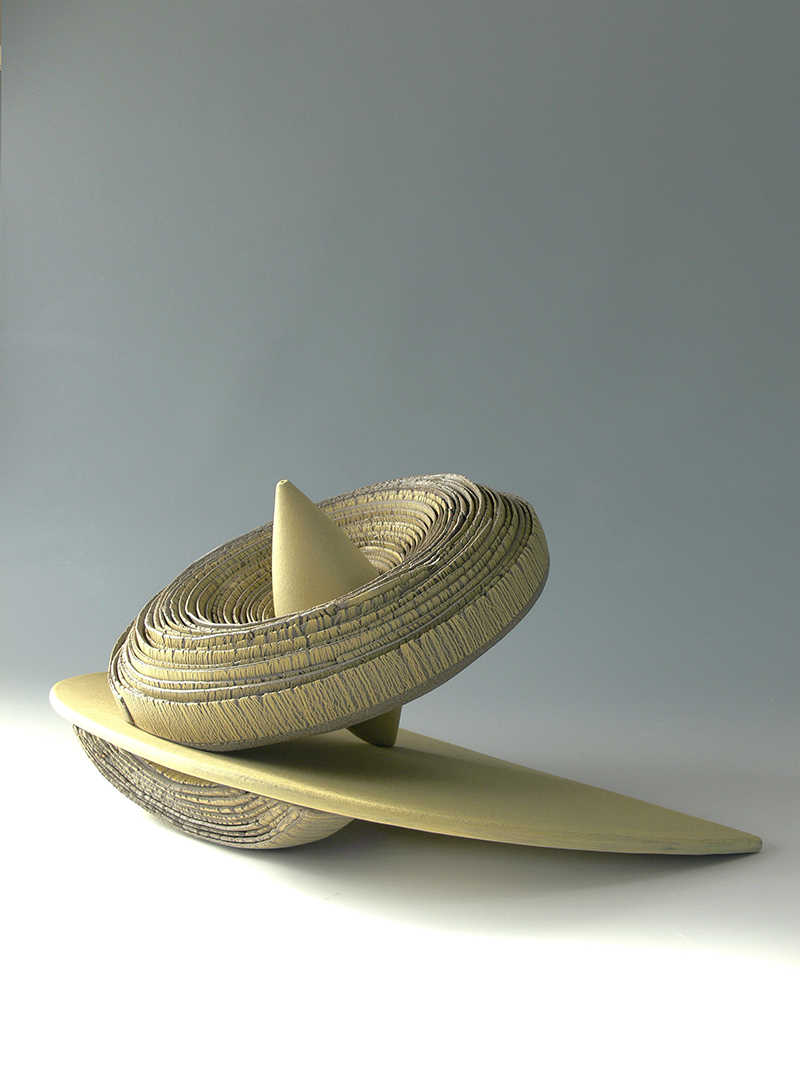
Contemporary artist Agnes Husz.
What is the primary role of an artist? How do you describe yourself in the context of challenging people’s perspectives via your work and art?
Art carries the peculiarity of every age. It may never have been as diverse and sophisticated as it is today, as it is in our world now. I think we’re struggling with abundance now.
It is often the case that brilliant technical feats delight spectators with special uses of materials. Sometimes, indeed, this is enough to create an artistic work, but to me it is not satisfactory. I think the artist has to go beyond the captivating view to ask a deeper, more substantive question. In my case, for example, there are constantly recurring themes. They usually talk about the relationship between nature and humanity, about the existence of man in nature and the current problems of it. Perhaps it’s interesting that when I start a new work, I never make sketches or drawings. If I did, I would lose interest in that work. Instead, I will write down terms, terms that evoke the artwork in my imagination.
The process of creation is important. In my case, it is quite accurate to track, step by step, how the work has evolved. If the observer notices this, the joy of discovery grabs him and makes him even more curious. What’s going on here? How was this work done? What does it want to say? What is the message? If they curious, I think I’ve already achieved my goal.
How do you deal with the conceptual difficulty and uncertainty of creating work?
I’m an instinctive creator. I rely on my own feelings. I do not like to chew a concept or a thought for a long time. Hesitation and calculation are out because they never lead to good results. Such a work loses its freshness. I like to discuss ideas with other colleagues and friends about the philosophical background of a work. These kinds of ideas help crystallize the vague details.
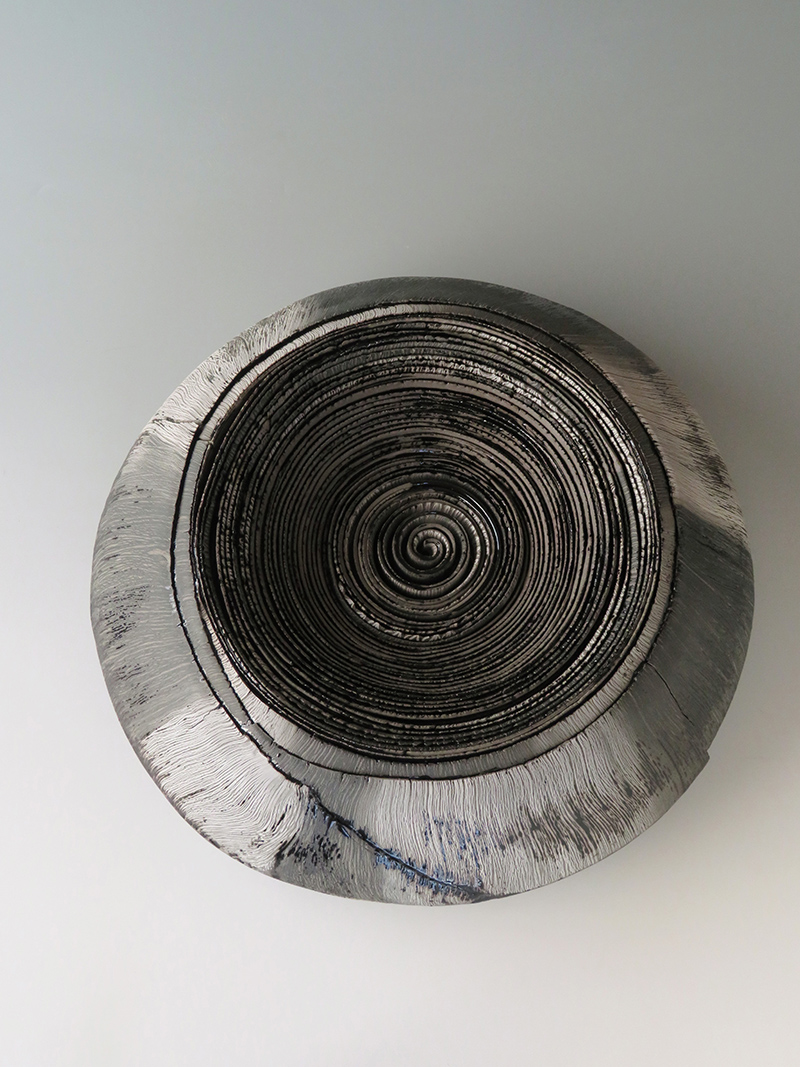
Contemporary artist Agnes Husz.
What is your experience of the power of formative collaborations? Which residency, curator or gallery helped you along on your artistic journey?
The formative power of collaboration is capable of real magic.
In Tokyo, in 2018, I was able to make a large-scale installation for the exhibition Answer from the Universe. The group exhibition was coordinated by the Museum of Tama Art University, with the Muography Art Project.
Muography inspired me to create the CODE installation, which incorporated my unique ceramic construction method with live performance, video and a soundtrack by a young composer.
The elements of CODE: the multimedia experience, the mixture of the past, real time, the sound performance, and the dynamic process of the stretching, cracking clay which was prepared in front of an audience, made this work very important to me.
I was inspired by the sound of the clay slapping my work table as I worked with the clay slabs. First, I wanted to represent this with another sound source, like clapping hands. I talked to my colleague about this and she said, “What are you saying? You should use the actual sound of the slabs themselves.” I saw that she was right and the next step was to find a composer who would be able make my idea come to life.
The curator of the exhibit, Dr. Takeshi Fuchida, asked his wife, a violinist, for a recommendation and she introduced the composer that I ended up collaborating with, Ten Goto. I told him about my admiration for the layered melodies of the contemporary composer Steve Reich as a guideline for the kind of music I was imagining. He and Dr. Fuchida then came to my studio with recording equipment to capture the sound of clay, as I prepared slabs and tested out ideas; later he arranged these sounds into a musical composition, which during the performance, mixed beautifully with the sounds I made working with the clay in real time. I am deeply thankful to Dr. Fuchida, because his positive attitude made it possible for us to work together with Ten Goto and opened a new way to create our artifact.

Contemporary artist Agnes Husz.
What are you looking for when you look at other artists’ work? Which shows, performances and experiences have shaped your own creative process? Who are your maestros?
Every branch of contemporary art is exciting to me. I love contemporary dance, theatre, and films. I am particularly fond of contemporary music by Steve Reich and
Tibor Szemző. I am also inspired by contemporary architecture, photographic art articles and books.Andy Goldsworthy is perhaps my true role model. His works accomplish all that I feel is my goal. Land art or environmental art, is what appears in my endeavours.
Abstraction and natural materiality is present in my work. It is a characteristic of Japanese culture, which is based on Zen philosophy. The first major turning point in my life was marrying a Japanese artist and moving to Japan. What a lucky turn of events!
The Japanese environment has determined the ideological, philosophical and intellectual background of my professional development.
How do you balance art and life?
My husband is also an artist, Wakabayashi Fumio, who makes colour graphics with copper engraving and woodcut. Thus, in our everyday lives, there is no separation between life and art. Virtually everything is subordinate to our artistic life and that is fine.
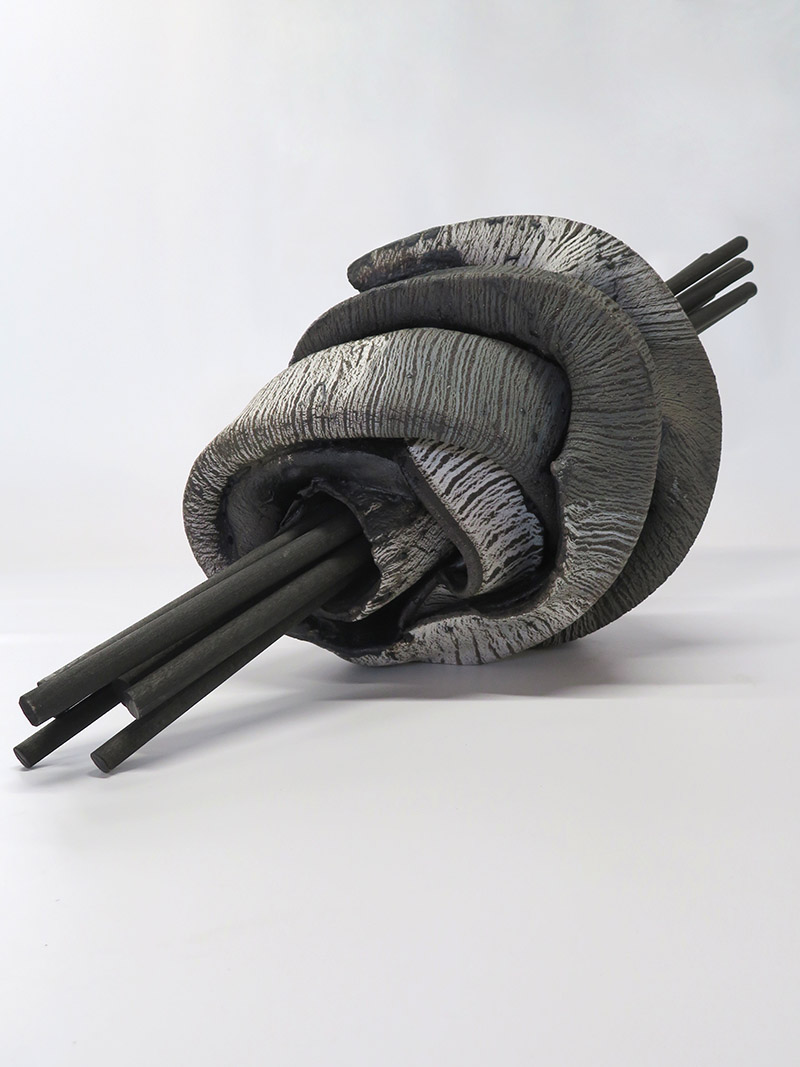
Contemporary artist Agnes Husz.
How do people react to your work?
It’s interesting to see how people react to my work. Those who first come across my creations are usually very surprised to not understand what they are made of. They think it’s made of paper, textiles, and leather. They can’t imagine it’s made of clay. How to make such a long thin flat strip of clay? And what’s this special design on the surface? Yes, this is due to the specificity of the clay, added to my specific procedure.
Tell us about the lessons and hurdles you have faced. Any memorable moment?
Spending three months in a studio in the Netherlands was the most important stage in my artistic career, where I laid the foundation and where everything changed radically. I had the opportunity to meet wonderful artists and work under one roof. Akio Takamori, Viola Frey, Philip Bard, Tony Cragg, Betty Woodman, Jun Kaneko and others. It’s a lifelong experience that I have learned a lot from.
I can’t talk about big hiccups or frustrations, because if something didn’t work out, I’d never have been disappointed. If I knew that I was going in the right direction, then that confidence accompanied me.
Tell us a little about the evolution of your artistic process?
Infinite, the work which appeared in subsequent muography art exhibits, explores a similar theme. More recently, I expanded on this idea of the spiral shape with Ripples, a work that won the New Orientalia Award at the International Academy of Ceramics conference in New Taipei City in 2018.
With Ripples I explored how the fluid dynamics of water give the piece motion and life even after completion by pouring water into the recessed area. By incorporating the water element inside the piece itself, I was able to harness some of the motion and activity in the exhibition space and add the idea of time expressed by motion.
The beginning of the process of making my artwork has become second nature, an almost meditative process that is connected to my subconscious. However, after the process of creation, which must be done with a clear open mind, I can analyse the piece more logically. Then I can go over what worked well and what did not work and the process of naming and assigning meaning begins.
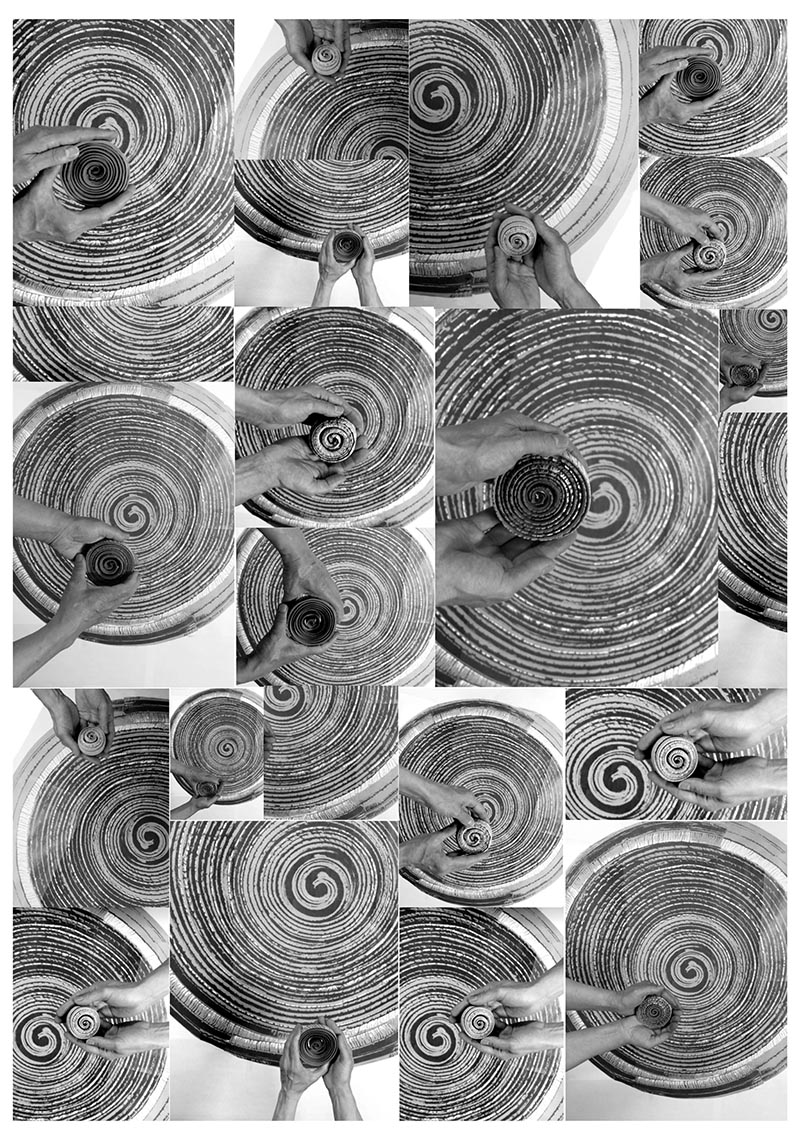
Contemporary artist Agnes Husz.
What was your first sale? How does your interaction with a curator, gallery or client evolve? Are you more of a studio artist or naturally collaborative by nature?
I remember the first major sale and order very well because it’s a bit of a funny story. This is one of my early works, an interesting vase series that I had designed while still in university and later developed into a product. When I was done with the prototypes, I put two objects in a semi-circular fashionable shoulder bag, the shape of which matched the objects exactly. So, I prepared to knock on the shops. First, I always presented a photo of the item, and then when the manager suggested how good it would be to actually see the items, I came up with a bag that no one thought could have original pieces placed in it. It was a big surprise and I got many orders immediately!
Advertising and market research is an important part of self-management. At exhibitions, it is mainly galleries and agents who manage this part of the work. But of course, what I can do is also my responsibility as it is in our common interest.
The relationship with the client, gallery, or curator will probably be decided at the first moment. Everything is based on mutual interest and sympathy. If both parties are enthusiastic about a project then success is certain. I am happy when a gallery or a curator has independent ideas, because it has a creative impact on the following work. It’s great to have a gallery or curator watching and helping an artist over the years. I think galleries dream of discovering a new face, while an artist dreams of being discovered by a good gallery.
Nowadays, galleries don’t have to bother much to find new and interesting artists. Everything is on the Internet. That’s why personal contact is important.
Unfortunately, really great projects do not involve business profits, but rather expense. This situation is difficult for both parties. This is when sponsorship becomes necessary. However, one cannot expect an artist to offer his work for free for “noble” purposes. Very often the artist lends his work for a major event for free. You won’t get any royalties because the opportunity to perform is valuable itself.
It really is time for everyone to realise that art is just as much a commodity as anything else on the market. If you want to own it in some form, you have to pay for it. By purchasing an art work, not just one object is acquired by the collector, but the essence of the artist’s life and decades of experience, condensed into a single work.
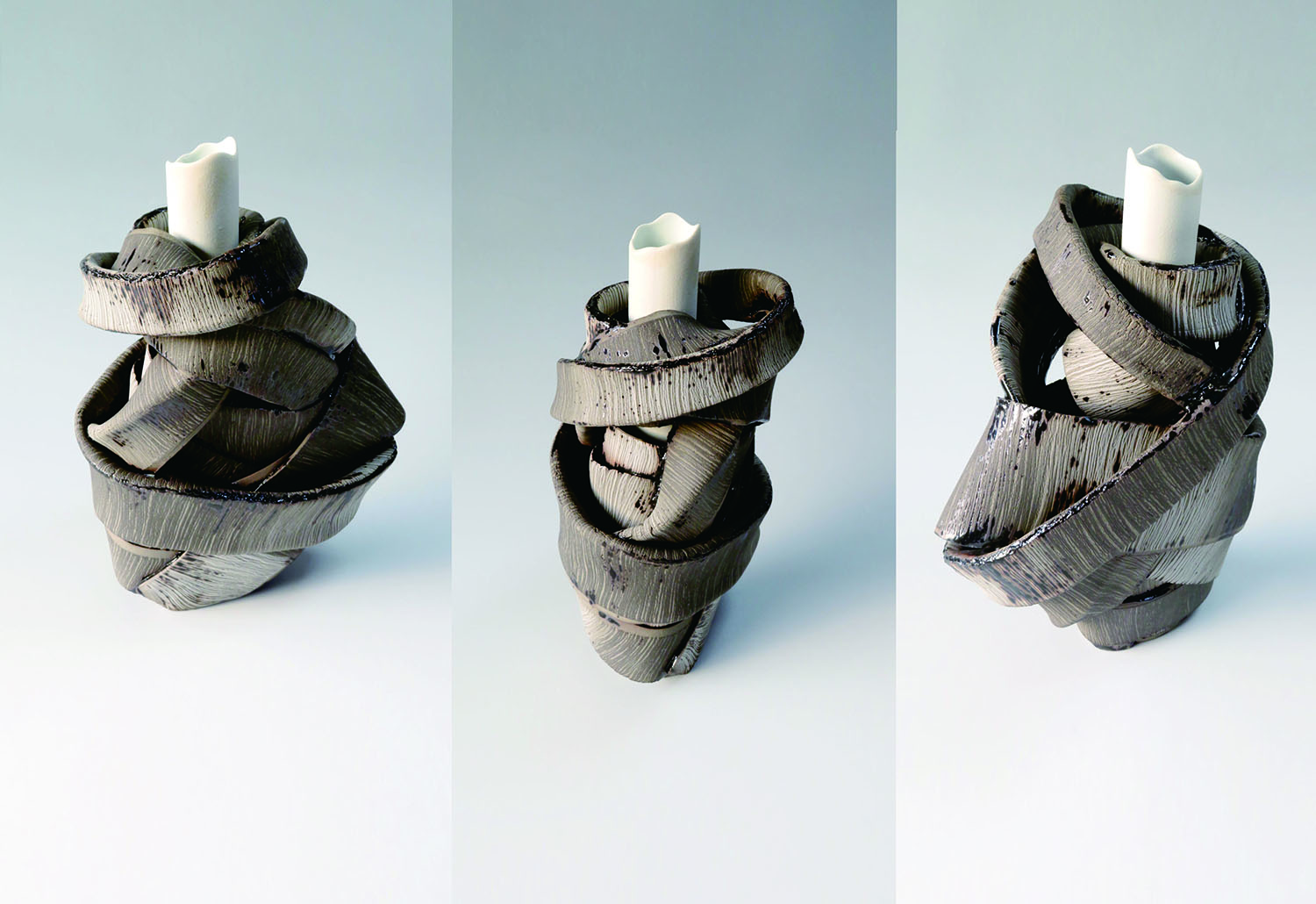
Contemporary artist Agnes Husz.
What are you working on now? What’s coming next season?
I have at least two or three solo exhibitions a year in Japan or abroad. In the autumn I will have a solo exhibition in Tokyo, Ikebukuro SEIBU department store Art Gallery in October 2020 and in the winter in Nagano, TOKYU department store Art Salon.
I have two significant invitations for overseas residency in Asia. I’m going to work in Taipei for a month in April, artist-in-residence at Cheng-Gong High School, Taiwan. And I’m invited to China from May to July.
Above all, there will be a very exciting project in Tokyo in March. The great art event year by year in early spring is World Art Tokyo, which aspires to develop continuously as a platform to distribute and enhance mutual understanding of cultures worldwide.
In this exhibition where cultural and aesthetic commonalities and differences of each country merge in unique patterns, one would be able to experience new “adventures” crafted by artists from various countries.
I represent Hungary and my work will be installed in a historic building of the Japanese National Museum of Science in Tokyo, Ueno. The concept of this satellite exhibition is to rediscover the “Japaneseness”. The theme of this exhibition is to re-examine Japanese culture through the works of artists from various countries in the city of Tokyo.
I will make an installation from my new series Tomeishi. In Japanese it means “stop stone”. Tomeishi or Sekimori stone in Buddhism serves as a sign to close the road. It has been used over the centuries in Japanese gardens, temples, and in the world of tea ceremony. It is a marker that determines the boundary.
Before you go – you might like to browse our Artist Interviews. Interviews of artists and outliers on how to be an artist. Contemporary artists on the source of their creative inspiration.








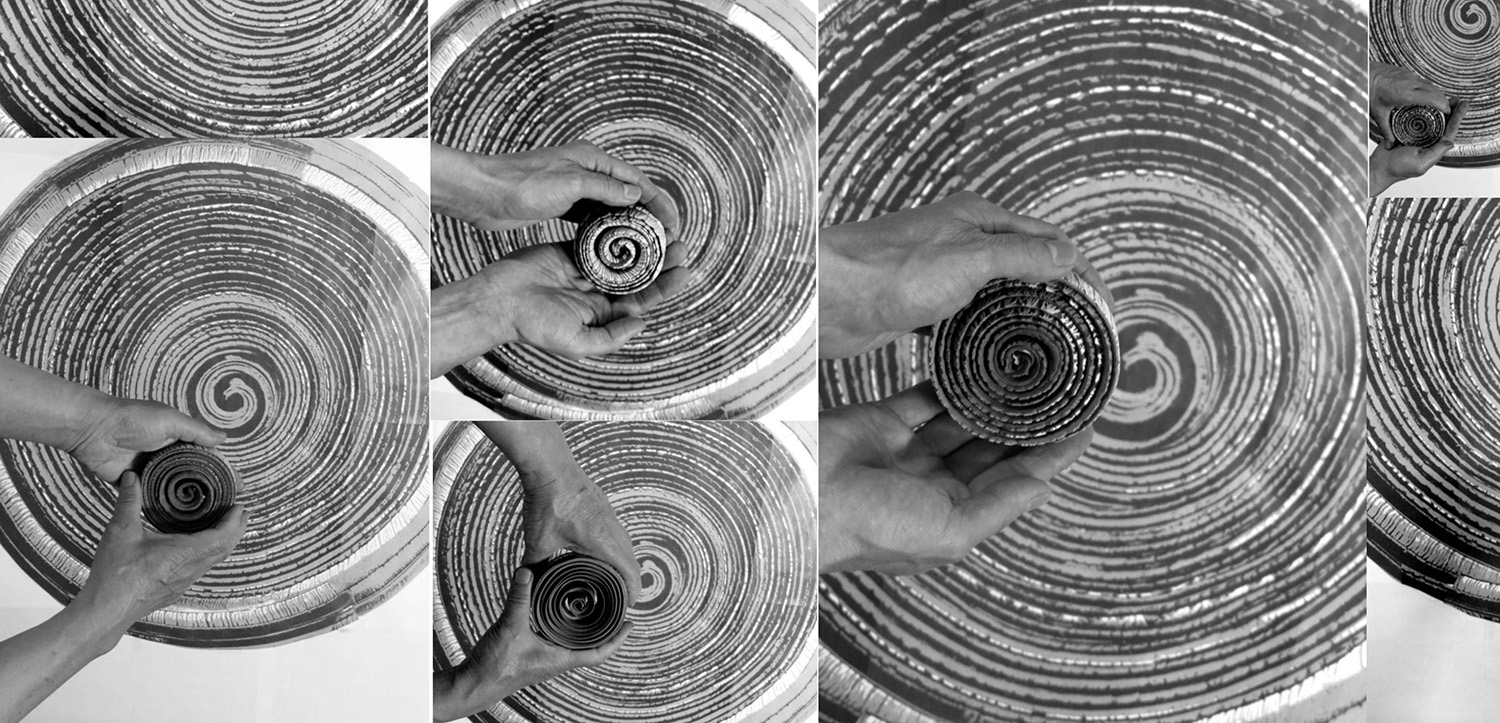



Add Comment